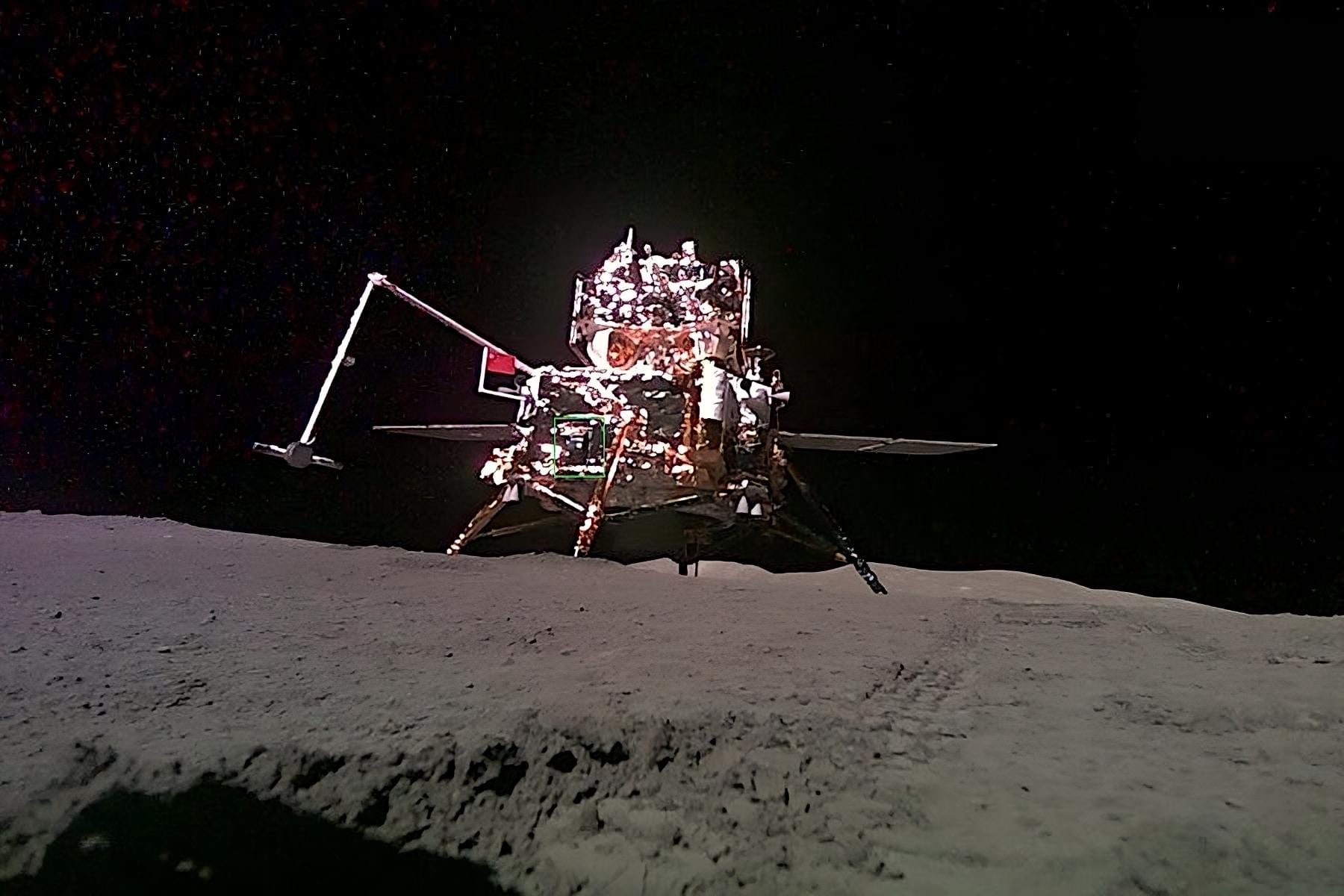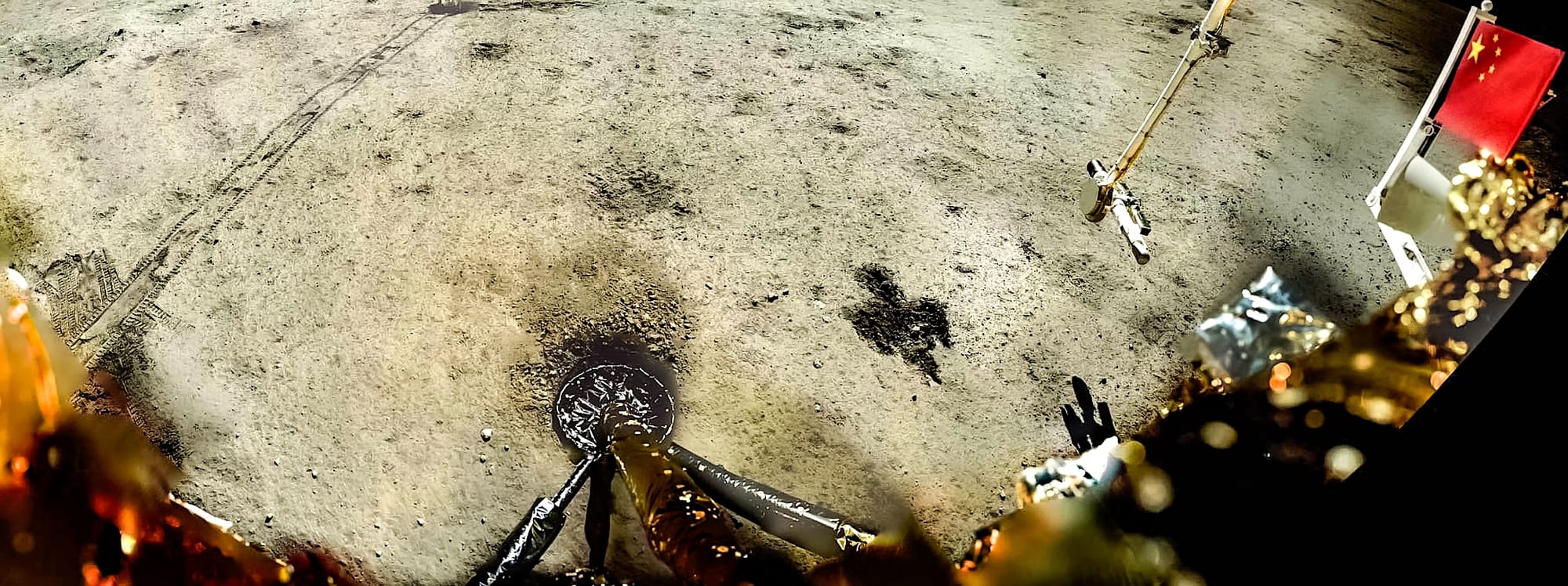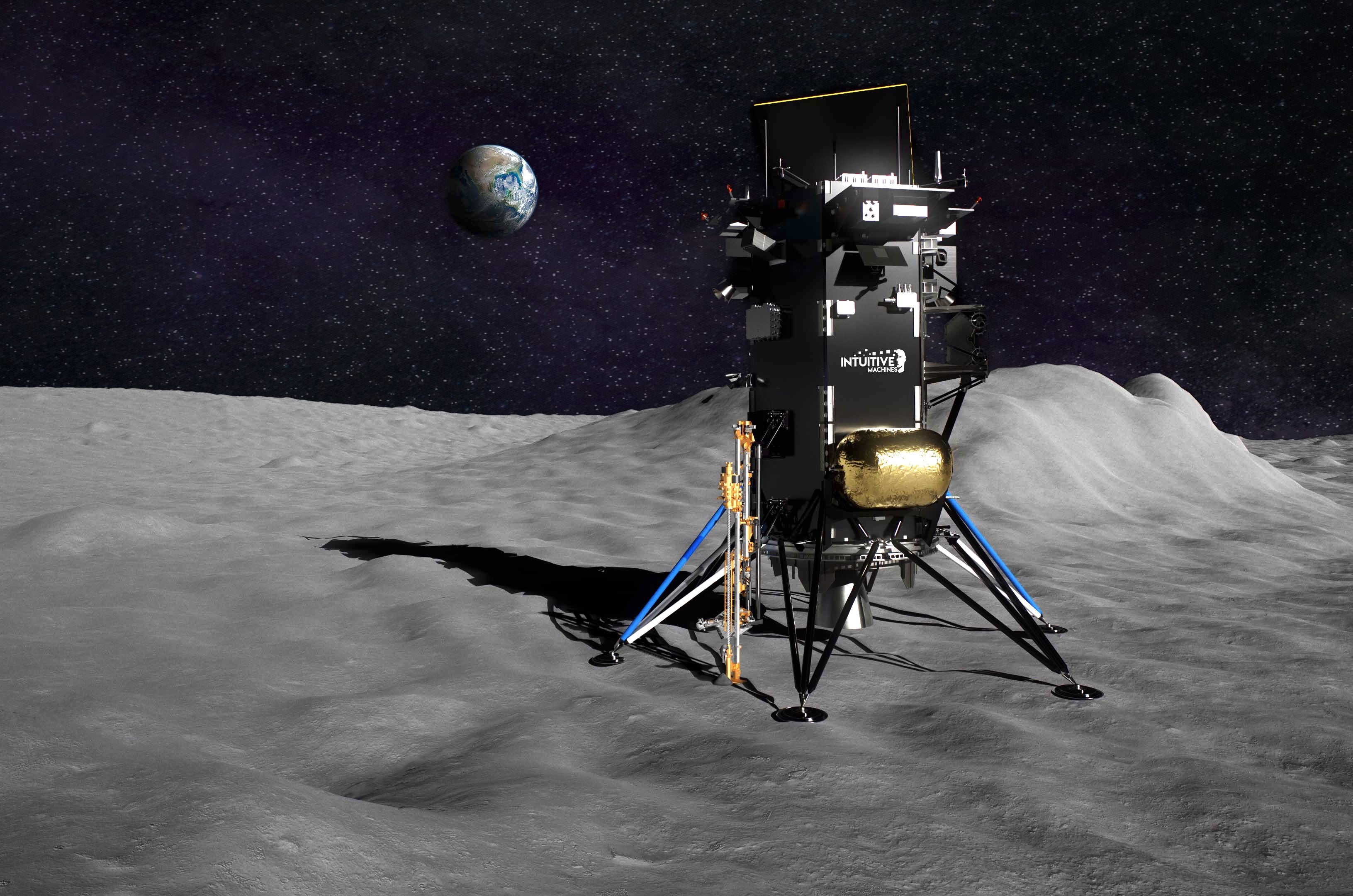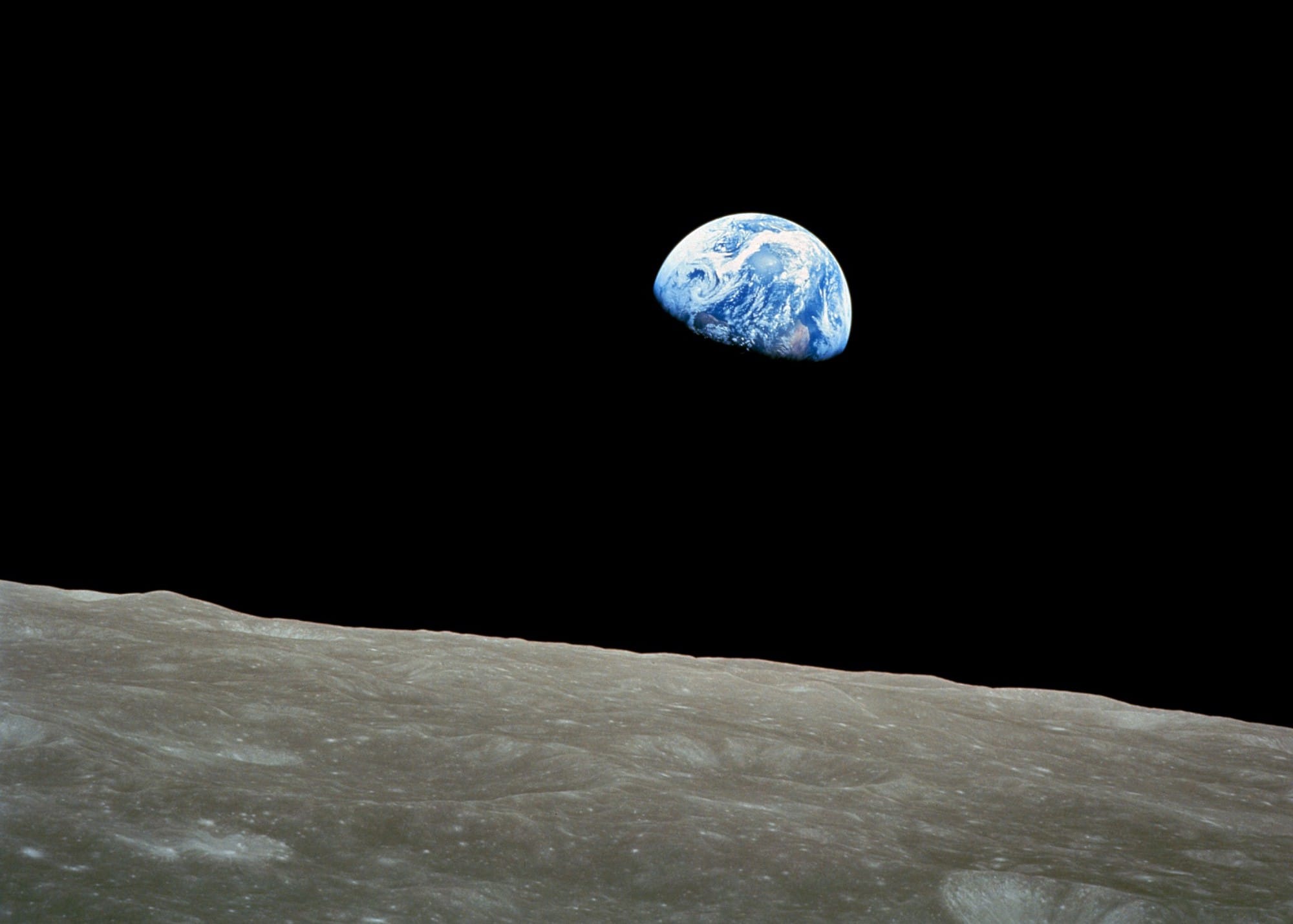Moon Monday #179: Chang’e 6 samples in lunar orbit, a fiery Starship, a critique of CLPS, and more
I’m truly excited to welcome Astrolab as the latest yearly sponsor of my Moon Monday blog+newsletter! 🚀
California-based Venturi Astrolab Inc. (Astrolab) is developing a fleet of large multi-purpose rovers for advanced exploration of our Moon. To that end, Astrolab leads one of the three teams NASA selected earlier this year to mature their designs for a versatile Lunar Terrain Vehicle (LTV), which the agency hopes to use with and without crew across Artemis missions starting end of decade. 🌗
What I have always loved about the Astrolab-led LTV bid is that unlike other proposals, their FLEX rover has a publicly known functional terrestrial prototype—tested for mobility as well as crewed, remote, and payload deployment operations. Astrolab is also the only company to have publicly announced plans to send a demonstration rover, one with customer payloads. ✨
Chang’e 6 samples await in lunar orbit

In a span of a week, China’s Chang’e 6 lander successfully touched down on the Moon’s farside on June 1, collected up to 2 kilograms of soil and rock samples using a still drill and a movable complementary surface scoop (a process aided by a terrestrial replica CNSA setup of the sampling area to test and verify sampling strategies as well as context-providing lander instruments comprising cameras, a ground penetrating radar, and a mineral spectrometer), used its arm to move the samples to a sealed container, deployed a small 5-kilogram rover to tactically photograph the Chang’e 6 lander, launched the samples to lunar orbit as part of an ascent module on June 3, which autonomously determined its position and orientation with aid from the Queqiao 2 communications relay lunar orbiter, and then docked with the Chang’e 6 orbiter on June 6 following four orbital adjustments, about 30 minutes after which the lunar samples were transferred to the Earth-return capsule.
That’s one impressive way to perform what’s so far looking like a very nominal mission, including the orchestration of many modules the kind that will help China land humans on Luna, which the country hopes to achieve by end of decade. China is the only nation to have performed robotic rendezvous and docking at the Moon.
The Chang’e 6 orbiter will soon jettison the ascent module, which CNSA will deorbit to crash into the Moon similar to Apollo missions. The Chang’e 6 orbiter will remain in lunar orbit until June 20 or 21, awaiting a window for returning to Earth. On its way towards our planet around June 25, it will release the sample-hosting capsule, which will perform a bounced atmospheric reentry and hopefully safely descend and land in China’s northern Inner Mongolia Autonomous Region. The Chang’e 6 samples will be scientifically even more valuable than the Chang’e 5 samples, expected to help scientists worldwide solve a whole host of Moon mysteries such as understanding the distinct farside volcanism and why the farside is so enigmatically distinct to the familiar nearside—which is necessary to understand not just Luna’s evolution but that of our Solar System.

In the meanwhile, Chinese scientists are already thinking ahead on how to glean more scientific value from lunar samples. Researchers at the China Institute of Atomic Energy (CIAE) are using particle accelerators to detect Iron-60 in simulated lunar samples. Iron-60 is a rare isotope produced by exploding stars, and identifying its trace existence in actual lunar samples soon would be another way scientists utilize the Moon to understand the Universe beyond.
Other than collecting samples, Chang’e 6 mission operators turned on two European instruments aboard the lander: the Negative Ions at the Lunar Surface (NILS) payload from ESA and the Swedish Institute for Space Physics, and the French space agency’s Detection of Outgassing RadoN (DORN) detector. NILS already detected negatively charged particles on the Moon’s farside, a world first. These particles are produced due to highly energetic solar wind particles slamming the Moon’s surface and kicking up secondary particles.
NILS is the first European instrument to operate from the Moon’s surface, and is also Europe’s first such collaboration with China. Furthermore, ESA has been providing ground station tracking and orbital confirmation support for Chang’e 6, similar to how ESA has been helping ISRO’s Chandrayaan missions.
NASA’s road to the Moon continues via Starship

SpaceX’s fourth launch of its fully integrated Starship Super Heavy rocket on June 6 was a comprehensive success, with both the Super Heavy booster and the Starship second stage completing their flights and performing controlled soft oceanic splashdowns. The latter’s victorious outcome was especially dramatic, as it survived a fiery reentry despite losing many heat shield tiles and actuating a burnt-through flap. With this flight, SpaceX has cleared another milestone in a long path to put humans on the Moon again since NASA has selected Starship’s lunar variant for the Artemis III crewed landing mission later this decade.
But much like the biggest of Starship ambitions, the Lunar Starship as envisioned needs a high launch cadence for adequate in-orbit refueling, for which a key decider will be the heat shield; specifically how well SpaceX can get it to perform on the second stage, and how fast the company can refurbish such Starships. Peter Hague captures it well on his blog Planetocracy:
If due to the thermal protection system or other reasons SpaceX is unable to cheaply and quickly reuse second stages, then the Starship project as envisioned may be in trouble. There are multiple ways the Starship program could turn out. I think we can rule out total failure of the program at this point as very unlikely — but it might be that first stage reuse works, while second stage reuse proves too hard for SpaceX. That would be disappointing, but not the end of the world.
A partially reusable Starship would be a rocket with almost twice the payload of a Saturn V (as it would not have to carry tonnes of reuse equipment) but with the economics of a Falcon 9. Being able to launch a vehicle in this class perhaps 100 times a year would be revolutionary in itself.
Ultimately, it means that we would likely have a US crewed lunar landing enabled via Starship in some form but the hope, of course, is that SpaceX continues to clear immense technical hurdles in developing Starship and provides NASA with a concrete road to the Moon.
Related: Is dearMoon’s Starship flight cancellation purely a financial setback? I doubt it.
Also relatedly, NASA and SpaceX conducted a terrestrial test of astronauts interacting with full-scale developmental hardware of an airlock, its deck, and an elevator part of SpaceX’s Lunar Starship. The astronauts put on Axiom-provided spacesuits and pressurized them outside the airlock. The tests aimed to simulate the mobility environment crew will face on the Moon, and accordingly evaluated procedures, checkouts, specific movements coupled with mobility aids, effectiveness of the control panels, and more. NASA says the tests confirmed that the amount of space available in the Starship airlock, on its deck, and in the elevator are sufficient for astronauts to work with.
Many thanks to Astrolab and Sanket Suman Dash for sponsoring this week’s Moon Monday. If you love this curated community resource too, join them and support my work.
A critique of CLPS

The latest report from NASA’s Office of Inspector General has criticized ways in which NASA has been handling its CLPS program to send agency-funded payloads aboard private lunar landers, presenting a commercially unattractive outcome too:
The total value of NASA’s eight delivery task orders increased from an initial value of $781.4 million to $984.3 million as of February 2024. Since CLPS’s inception in 2018, five of eight task orders have experienced cost increases, and seven of eight have experienced schedule delays. Five of the eight experienced both cost increases and schedule delays. Further, two task orders were terminated, one of which had already been paid $66.1 million of the $81.3 million task order value based on milestones performed.
[...]
NASA built the CLPS business model assuming the commercial lunar delivery market would mature with time. However, more than 5 years after the initiative was established, the market is still heavily dependent on NASA task order funding. Vendor officials told us that about 20 percent of demand for lunar delivery services come from commercial or international entities, while NASA provides the other 80 percent. NASA officials also have not conducted any new market studies to assess demand or capability growth across this industry since 2017.
[...]
NASA deviated from its original, hands-off strategy for the initiative and from its plan for incremental progress towards larger missions. Rather, the Agency’s aggressive lander development schedules led to increasingly risk-averse practices and policies. For example, NASA insight and oversight increased, and more detailed vendor proposals were required. This resulted in higher costs and delayed delivery schedules while threatening the initiative’s ability to achieve its broad objectives.
[...]
We found that NASA-directed changes, including augmented insight and landing site changes, led to $171.4 million in project cost increases. Finally, we found CLPS lacks a detailed management plan that could outline a disciplined approach, promote accountability for how the Agency measures success, and help the initiative weigh competing priorities.
More Moon

- Bill Anders, who showed us Earth from the Moon during his Apollo 8 flight, passed away at the age of 90 in a self-piloted plane crash.
We came all this way to explore the Moon, and the most important thing is that we discovered the Earth.
- The NASA-funded and Advanced Space-led CAPSTONE lunar orbiter has now completed 18 months in lunar orbit, meeting most of its mission objectives. As a literal pathfinding mission for the upcoming NASA-led international Gateway orbital habitat, CAPSTONE has been test-flying the fuel-efficient Near-Rectilinear Halo Orbit (NRHO) the lunar station will be in. Results from it are helping NASA refine the orbit’s mathematical models based on the exact propellant and resources CAPSTONE consumed to maintain desired operations, including the 25 maneuvers it has performed to date. CAPSTONE has also continued to cross-communicate with NASA’s Lunar Reconnaissance Orbiter (LRO) to work towards demonstrating autonomous position determination and navigation in lunar orbit, that is, without relying on or chocking up Earthly ground stations. The CAPSTONE team deserves the fruits of the mission’s successes, for they practically fully recovered a failing spacecraft and managed to have it enter NRHO despite a faulty valve in one of its eight thrusters—which is still stuck!
- With a second hot fire test of its prototype Huracan engine, The Exploration Company is inching towards its desire to send their Nyx Moon spacecraft to Luna. The company hopes to one day have Nyx Moon supply up to 5,000 kilograms of cargo to the NASA-led Gateway. The capsule can bring 2,000 kilograms worth of material from the Gateway to Earth too.

